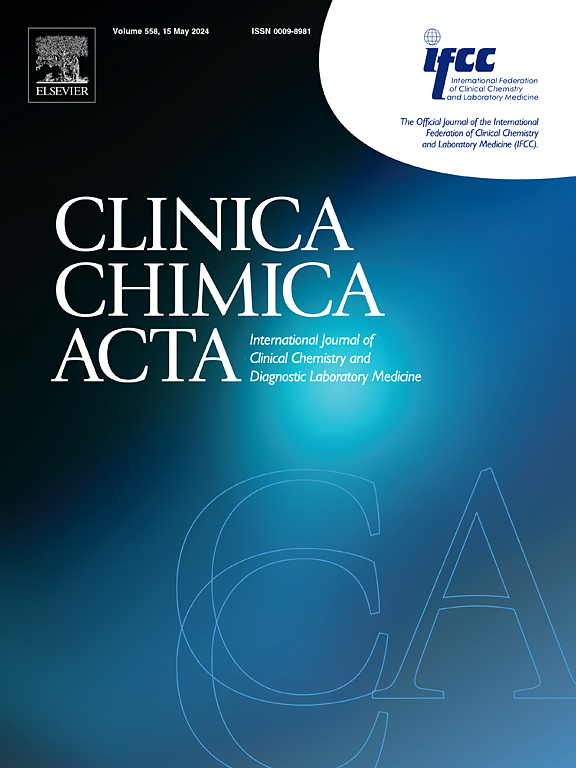Aptamer biosensors for thrombin
IF 3.2
3区 医学
Q2 MEDICAL LABORATORY TECHNOLOGY
引用次数: 0
Abstract
Thrombin, a key factor in the coagulation cascade, is a valuable biomarker of great importance for the prognosis, diagnosis, and monitoring of various diseases, including cancer and heart disease. Due to the increasing attention to the development of point-of-care testing (POCT) options, various types of biosensors have been invented to enhance the accuracy and speed of detection of important biomarkers such as thrombin. Implementation of aptamers in biosensors (aptasensors) improves the target recognition capacity due to the high-affinity binding nature of aptamers. Herein, this review presents recent studies of aptasensors for thrombin detection based on different detection mechanisms encompassing optical biosensors, surface-enhanced Raman spectroscopy (SERS), electrochemical detection, piezoelectric detection, and lateral flow assay.
凝血酶色素生物传感器。
凝血酶是凝血级联过程中的一个关键因素,是一种有价值的生物标志物,对包括癌症和心脏病在内的各种疾病的预后、诊断和监测具有重要意义。由于人们越来越重视开发床旁检测(POCT)方案,因此发明了各种类型的生物传感器,以提高凝血酶等重要生物标志物的检测精度和速度。在生物传感器(aptasensors)中使用适配体可以提高目标识别能力,这得益于适配体的高亲和性结合特性。本综述介绍了基于不同检测机制的凝血酶检测适配体的最新研究,包括光学生物传感器、表面增强拉曼光谱(SERS)、电化学检测、压电检测和横向流动检测。
本文章由计算机程序翻译,如有差异,请以英文原文为准。
求助全文
约1分钟内获得全文
求助全文
来源期刊

Clinica Chimica Acta
医学-医学实验技术
CiteScore
10.10
自引率
2.00%
发文量
1268
审稿时长
23 days
期刊介绍:
The Official Journal of the International Federation of Clinical Chemistry and Laboratory Medicine (IFCC)
Clinica Chimica Acta is a high-quality journal which publishes original Research Communications in the field of clinical chemistry and laboratory medicine, defined as the diagnostic application of chemistry, biochemistry, immunochemistry, biochemical aspects of hematology, toxicology, and molecular biology to the study of human disease in body fluids and cells.
The objective of the journal is to publish novel information leading to a better understanding of biological mechanisms of human diseases, their prevention, diagnosis, and patient management. Reports of an applied clinical character are also welcome. Papers concerned with normal metabolic processes or with constituents of normal cells or body fluids, such as reports of experimental or clinical studies in animals, are only considered when they are clearly and directly relevant to human disease. Evaluation of commercial products have a low priority for publication, unless they are novel or represent a technological breakthrough. Studies dealing with effects of drugs and natural products and studies dealing with the redox status in various diseases are not within the journal''s scope. Development and evaluation of novel analytical methodologies where applicable to diagnostic clinical chemistry and laboratory medicine, including point-of-care testing, and topics on laboratory management and informatics will also be considered. Studies focused on emerging diagnostic technologies and (big) data analysis procedures including digitalization, mobile Health, and artificial Intelligence applied to Laboratory Medicine are also of interest.
 求助内容:
求助内容: 应助结果提醒方式:
应助结果提醒方式:


